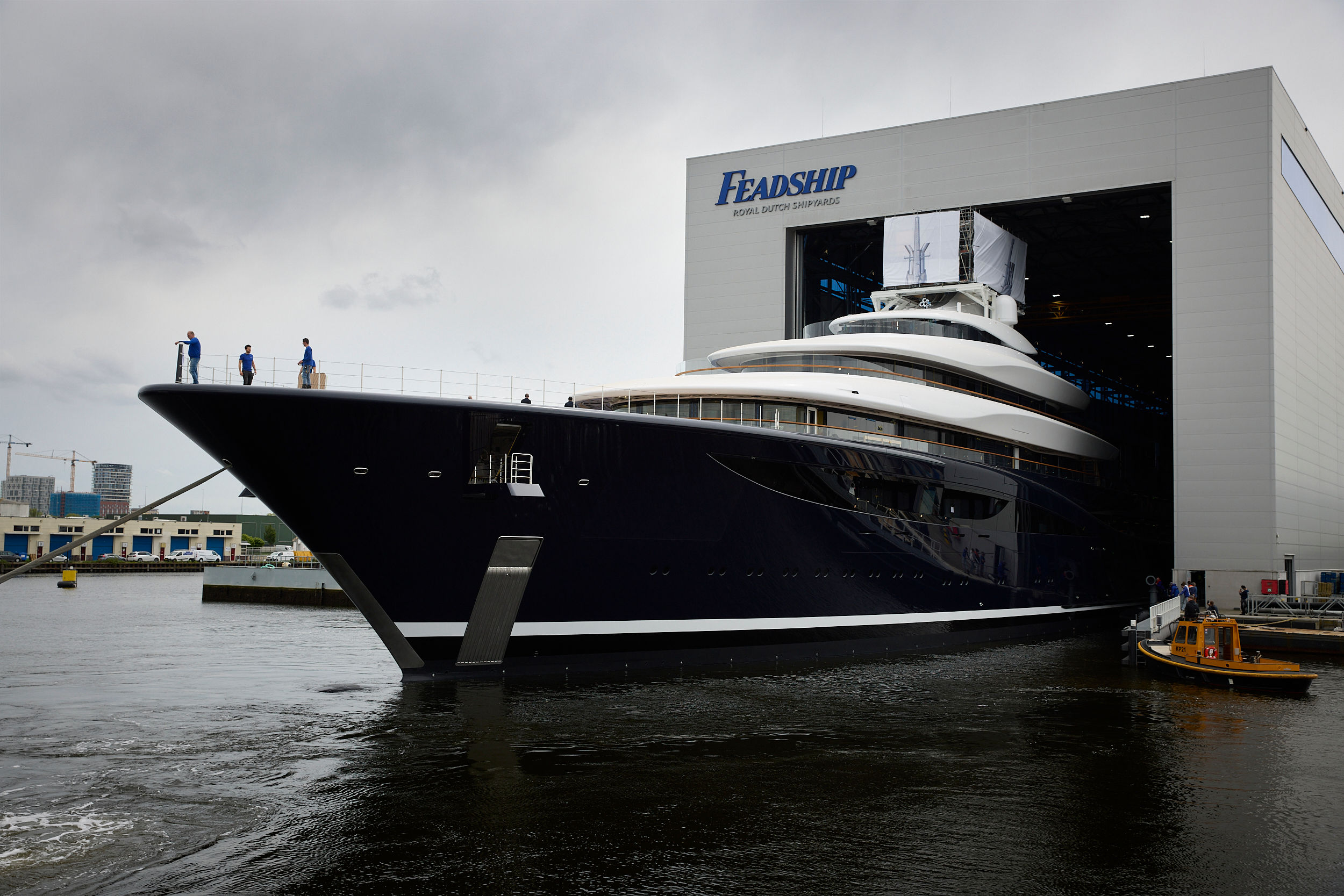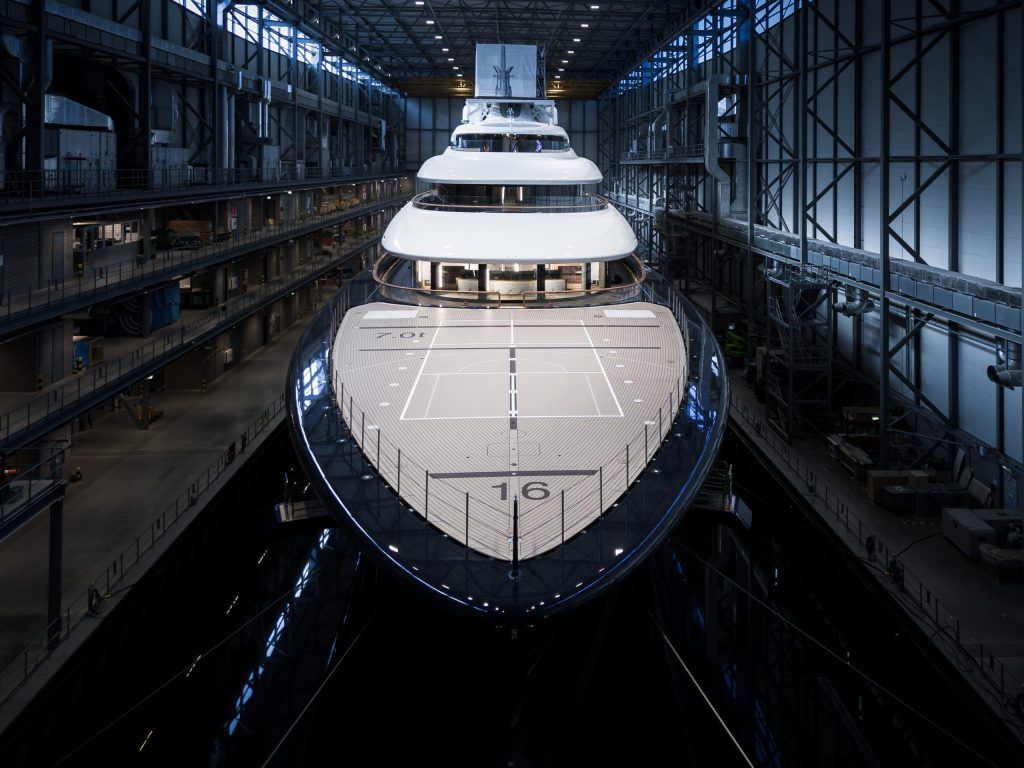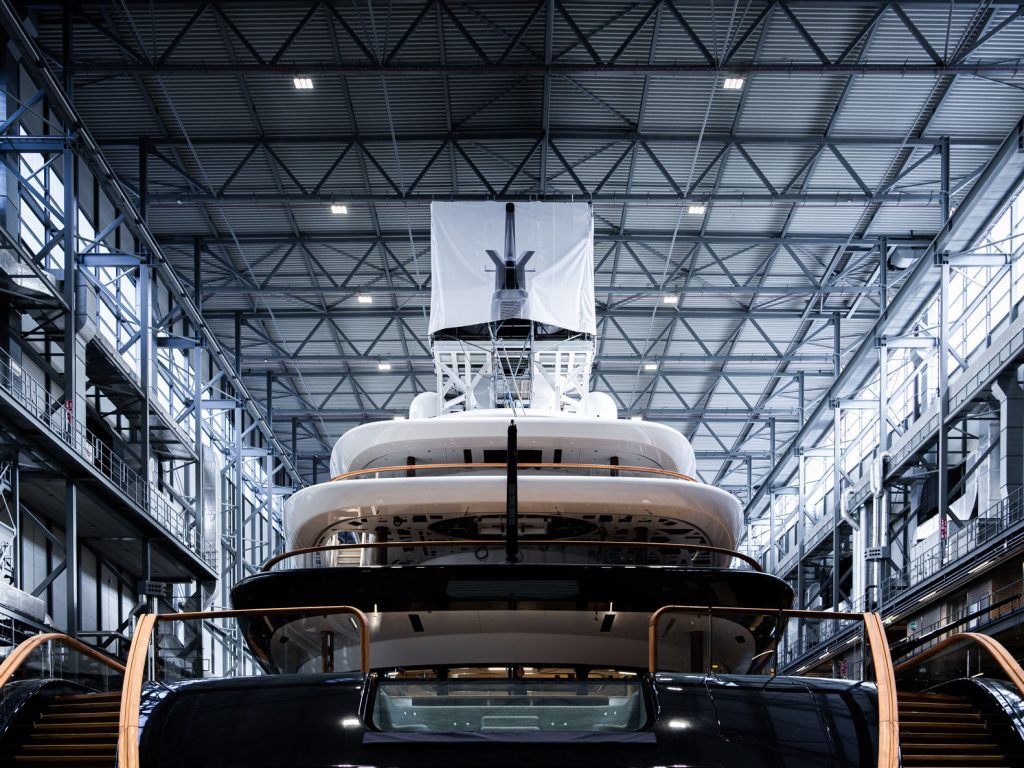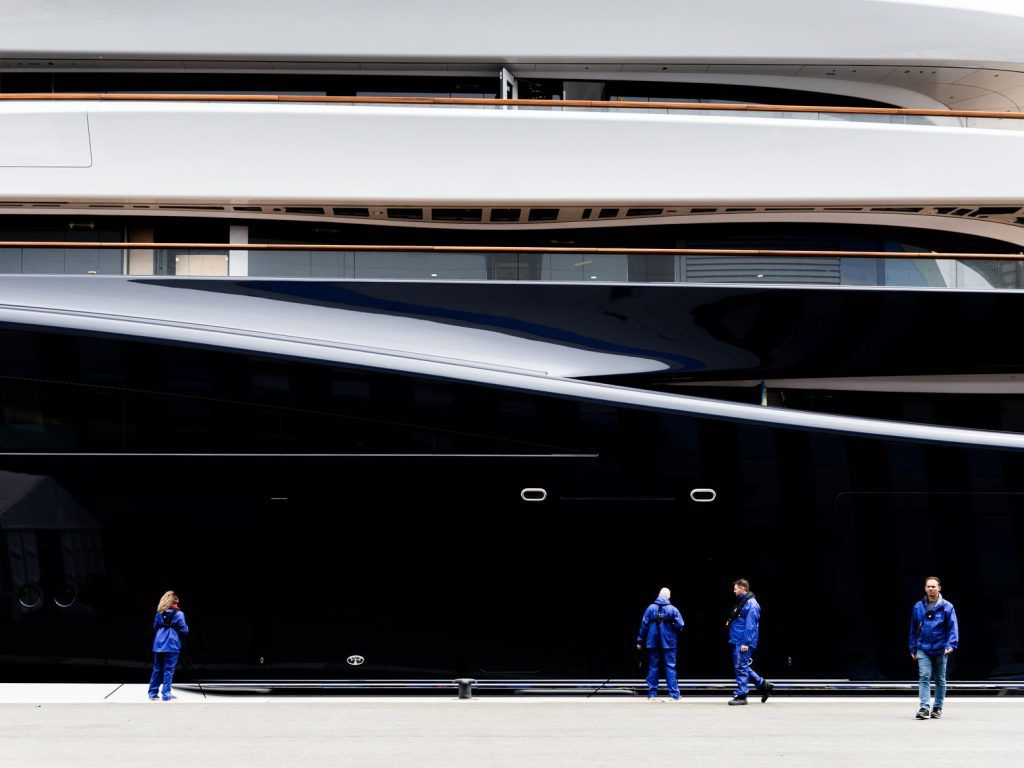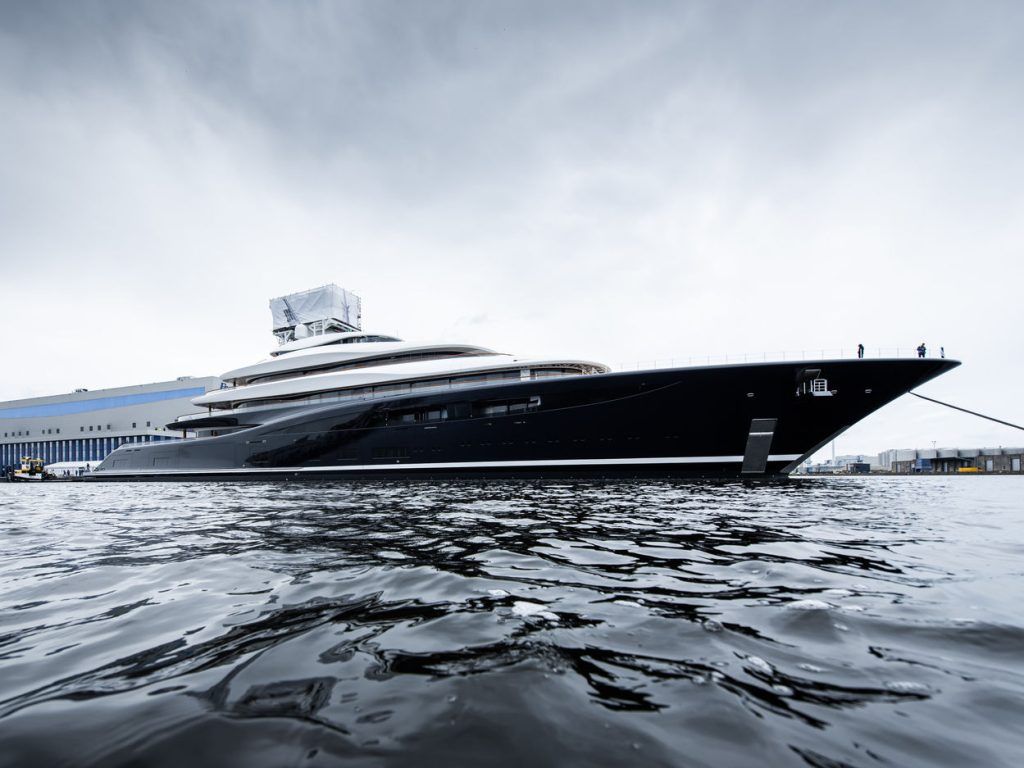The highly anticipated Feadship’s Project 821 was recently unveiled in Amsterdam, the Netherlands. It is rumoured to have been commissioned by Microsoft billionaire Bill Gates and comes with a staggering price tag of over USD 647 million. Considering the 119-metre hydrogen-powered superyacht is the first of its kind, it marks a ground-breaking moment in maritime history.
Representing an exciting leap forward in yachting innovation, Feadship’s Project 821 is a collaborative effort between the Dutch shipbuilders and visionaries from UK-based design firm RWD. Now represented on the market by yacht brokerage Edmiston, this ambitious vessel stands as a testament to Feadship’s unwavering commitment to environmental sustainability and has ushered in a new era in luxury yachting.
During the unveiling, Jan-Bart Verkuyl, Director and CEO of Feadship and Royal Van Lent Shipyard, underscored the company’s pledge to develop ‘net zero’ yachts by 2030 and its overall aim to continue pioneering clean technology for the world at large. Chiming in, superyacht broker and Chief Executive of Edmiston, Jamie Edmiston, stated that the goal was to build the greenest and most environmentally advanced superyacht to ever hit the market, and that Project 821 has truly set a new precedence.
The development of the vessel, which took over five years, focused on a ground-breaking zero-diesel approach, utilising liquid green hydrogen to power both the superyacht’s propulsion and plethora of onboard amenities. This came from the recognition that hydrogen processing in a fuel cell produces only electricity and water vapour, offering a more eco-conscious alternative for systems already in existence.
During the initial conceptualisation, the biggest challenge the team faced was finding a practical method to store compressed liquid hydrogen below deck at -253°C. To tackle this, Feadship invested in technology to be able to safely store the hydrogen within the superyacht inside of double-walled cryogenic storage tanks that function as insulated cooling boxes. The only downside is that storing hydrogen requires significantly more space than diesel fuel, up to eight to 10 times as much for the same energy equivalent.
Speaking to the press, the shipbuilders acknowledged that even a superyacht as large as Project 821 simply cannot carry enough pure liquid hydrogen for very long crossings. The 16 onboard fuel cells can provide approximately a week’s worth of ‘silent operations’ or emission-free navigation at 10 knots. However, beyond this, electricity can be generated by burning hydrogenated vegetable oil, also known as HVO, and the superyacht can convert methanol into hydrogen for fuel cells.
The approach is so revolutionary that technology utilised to develop Project 821 will soon also be used to build two 117-metre hydrogen-powered ferries ordered by Norwegian company, Torghatten Nord, which makes the significance of the superyacht on the maritime world already abundantly clear. Jan-Bart also touched upon this point, stating that fuel cells will play an important role in the industry for many years to come as a result of their efficiency, low particle emissions, and low noise radiation.
Beyond its hydrogen-focused systems, the superyacht’s interior and exterior are another feat of design. RWD employed a palette of light, neutral colours throughout the superyacht, utilising a sophisticated mix of textured fabrics, leathers, marble, rattan, and other eco-conscious materials to deliver a ‘luxe coastal’ aesthetic.
The superyacht boasts five decks above the waterline and two below and has a total of 14 hidden balconies that slide out at the touch of a button. At each deck level there are several lifestyle amenities on offer, including a large beach club to the aft of the vessel, a swimming pool and swim platform, jacuzzi and steam room, coffee corner, games area, private dining room with a sea terrace, private cinema, onboard hospital, and a semi-submerged lounge offering underwater views, among other facilities.
According to the designers, the layout of the interior is supposed to emulate that of a ‘secluded four-level townhouse-by-the-sea’ with a separate ‘apartment’ for the owners that houses two bedrooms, dressing rooms, a gym, pantry, two offices complete with fireplaces, a living room, elevator, and staircase lined with bookshelves. Beyond this enclave, the superyacht has a total of 12 bedrooms that can accommodate 30 guests and staff quarters for 44 crew.
For more information, click here.
(All images are credited to Feadship.)
Credit: Source link
